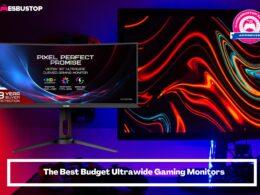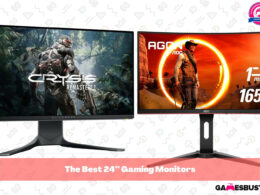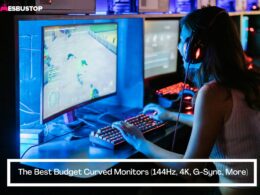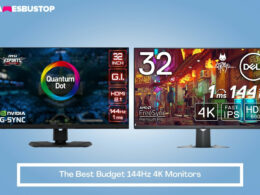On This Page Show
The gaming monitor market is growing rapidly and more monitors continue to launch each year. Despite so many gaming monitors out there, it’s hard to find an appropriate one that best suits your needs. When finding a laptop there are a lot of factors that influence your purchase decision.
The monitor’s refresh rate, screen resolution, variable refresh rate, screen size, and so many other factors must be considered. On top of that, your personal preferences and the kind of games you play also contributed to the buying decision.
The article compiles everything you need to know when buying a monitor for a smooth gaming experience.
Image Resolution
Screen resolution is the first thing that comes to your mind when you’re out in the market to buy a laptop. The resolution is the measurement of the width and height of the monitor in terms of picture elements or pixels.

The most common resolutions are 2560 x 1440, 1920 x 1080, and 3840 x 2160. The ultrawide monitors designed specifically for gaming, coding, graphic designing, and other intense tasks come with 3840 x 1080, 2560 x 1080, and 3440 x 1440 screen resolutions.
With a higher display resolution, picking the pixels with the naked eye is difficult. As you go higher, the quality and clarity of the image would increase. You may change the screen scaling settings to increase the font and visual elements.
Change the scaling for a particular app on Mac by right-clicking its icon and then Properties. Even though it’s simple, new users often wonder how to right-click on macbook pro computers. So, either use a mouse or a two-finger gesture on the Trackpad to right-click on the Mac.
Aspect Ratio
The width to height proportion is considered the monitor’s aspect ratio. The 1991’s boxy monitors were usually 4:3 standard monitors which 16:9 widescreen models later replaced. Today’s ultrawide monitors built for gaming come in a 32:10 or 21:9 aspect ratio.
The latest video games support different aspect ratios; you can play them on ultrawide or widescreen monitors. You can select the optimal aspect ratio for the game by tweaking the in-game settings.
If you opt for an ultrawide screen over a widescreen monitor, you will enjoy a set of advantages when playing your favorite game or watching YouTube content. These screens are specially designed to give you an outstanding movie-watching experience.
The screen estate fills more of the vision and allows you to expand the field of view (FOV) for the latest games. Curved screens can be another ideal pick as they provide a clearer view even on the edges of the screen.
Screen Size and PPI

Screen size is measured diagonally from one corner to another. A larger screen dimension can give you an immersive gaming experience. To buy a monitor that gives you high-quality visuals, it’s important to understand a little about pixel density.
The PPI is the measurement of resolution on a video display. The greater the PPI, the clearer the details would appear on the monitor. The industry standards for pixels per inch have improved rapidly in the last decade.
Some online tools help you understand the pixel density or pixel per inch so that you can make better buying decisions. Pixel Density is the volume of pixels divided by the sensor’s area to determine the screen’s sharpness.
Buy at least a 27-inch 4K gaming monitor if you have 20/20 vision and your monitor is placed around 20 inches away from your eyes. If you have weak eyesight, prefer sitting at least 24 inches away from the screen. In that case, go with a 1440p panel.
Color
When evaluating color clarity, there are many different factors that you need to consider. These factors include contrast ratio, color gamut, black level, and brightness, to name a few. You need to focus on all these aspects to pick a perfect gaming monitor.
Color contrast is a basic measure that evaluates the ratio between the extreme extent of black and white that the screen can display. If the contrast ratio is 1000:1, it specifies that the white part of the visual is a thousand times brighter than its black counterpart.
The luminance or brightness is measured in candelas per square meter to calculate the extent of light that the screen emits. Monitors display various shades of color and transit smoothly between different hues.
While gaming, you expect your monitor to display even slightly different colors accurately, so color depth is an important factor to consider. Common color depths include 6-bit, 8-bit, and 10-bit colors, where the 10-bit color monitors are rare and expensive.
So, these are four technical specifications you should keep in mind when you are out in the market to buy a gaming monitor. If you are buying online, check out the product details thoroughly for making the right purchase.










